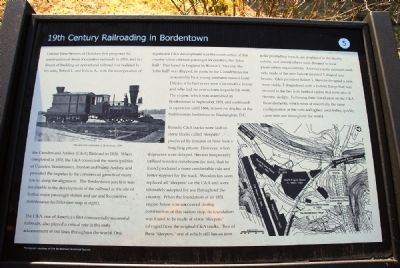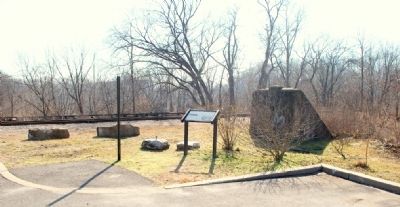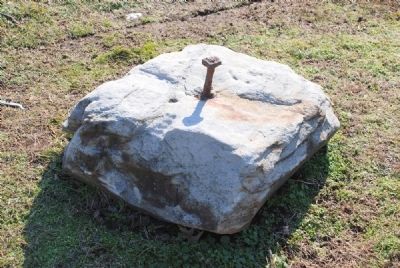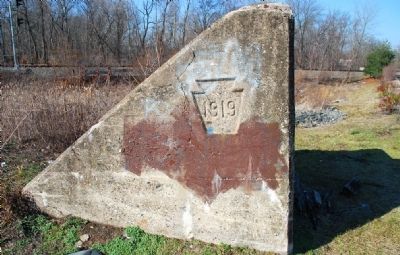Bordentown in Burlington County, New Jersey — The American Northeast (Mid-Atlantic)
19th Century Railroading in Bordentown
The C&A, one of America's first commercially successful railroads, also played a critical role in the early advancement of rail lines throughout the world. One significant C&A development was the construction of this country's first efficient passenger locomotive, the "John Bull." Purchased in England by Robert L. Stevens, the "John Bull" was shipped, in parts, to the United States for re-assembly by a young mechanic named Isaac Dripps, who had never seen a locomotive before and who had no instructions to guide his work. The engine, which was assembled in Bordentown in September 1831 and continued in operation until 1866, is now on display at the Smithsonian institution in Washington, D.C.
Initially C&A tracks were laid on stone blocks called "sleepers" produced by inmates of New York's Sing Sing prison. However, when shipments were delayed, Stevens temporarily utilized wooden crossbeams (or ties), that he found produced a more comfortable ride and better support for the track. Wooden ties soon replaced all "sleepers" on the C&A and were ultimately adopted for use throughout the country. When the foundation of an 1851 engine house was uncovered during construction of this station stop, its foundation was found to be made of stone "sleepers" salvaged from the original C&A tracks. Two of these "sleepers," one of which has and iron spike protruding from it, are displayed in the nearby exhibit, and several others were donated to local preservation organizations. America's early railroads used rails made of flat iron bars or inverted T-shaped iron beams. C&A president Robert L. Stevens designed a new, more stable, T-shaped rail with a bottom flange that was secured to the ties with hooked spikes that were also of Stevens' design. Following their installation on the C&A these elements, which were of essentially the same configuration as the rails and spikes used today, quickly came into use throughout the world. (Marker Number 5.)
Topics. This historical marker is listed in this topic list: Railroads & Streetcars. A significant historical month for this entry is September 1831.
Location. 40° 8.8′ N, 74° 42.95′ W. Marker is in Bordentown, New Jersey, in Burlington County. Marker is on 100 West Park Avenue. Plaque and static display are at the far end of the Bordentown New Jersey Transit Rail Station parking lot. Touch for map. Marker is in this post office area: Bordentown NJ 08505, United States of America. Touch for directions.
Other nearby markers. At least 8 other markers are within walking distance of this marker. Point Breeze (about 400 feet away, measured in a direct line); An Early Transportation Hub (about 500 feet away); Discover Abbott Marshlands: A Natural & Historical Treasure (about 500 feet away); The Delaware: A National Treasure (about 600 feet away); The "Wye" and the Lower Bordentown Station (about 600 feet away); First Baptist Church (about 600 feet away); 50 Star Flag (approx. 0.2 miles away); World Wars I and II Memorial (approx. 0.2 miles away). Touch for a list and map of all markers in Bordentown.
Additional commentary.
1.
The stone blocks were generally quarried within 10 miles of the right of way. Sing Sing inmates only quarried Inwood Marble blocks.
— Submitted January 23, 2018, by Pierre Lacombe of Florence, New Jersey.
Credits. This page was last revised on November 15, 2020. It was originally submitted on April 24, 2008, by Ronald Claiborne of College Station, Texas. This page has been viewed 1,577 times since then and 43 times this year. Photos: 1, 2, 3, 4. submitted on April 24, 2008, by Ronald Claiborne of College Station, Texas. • Craig Swain was the editor who published this page.



